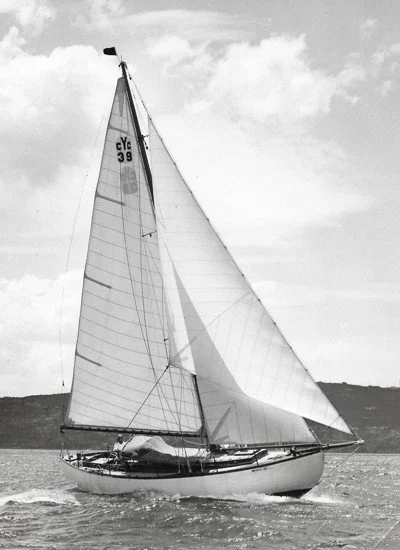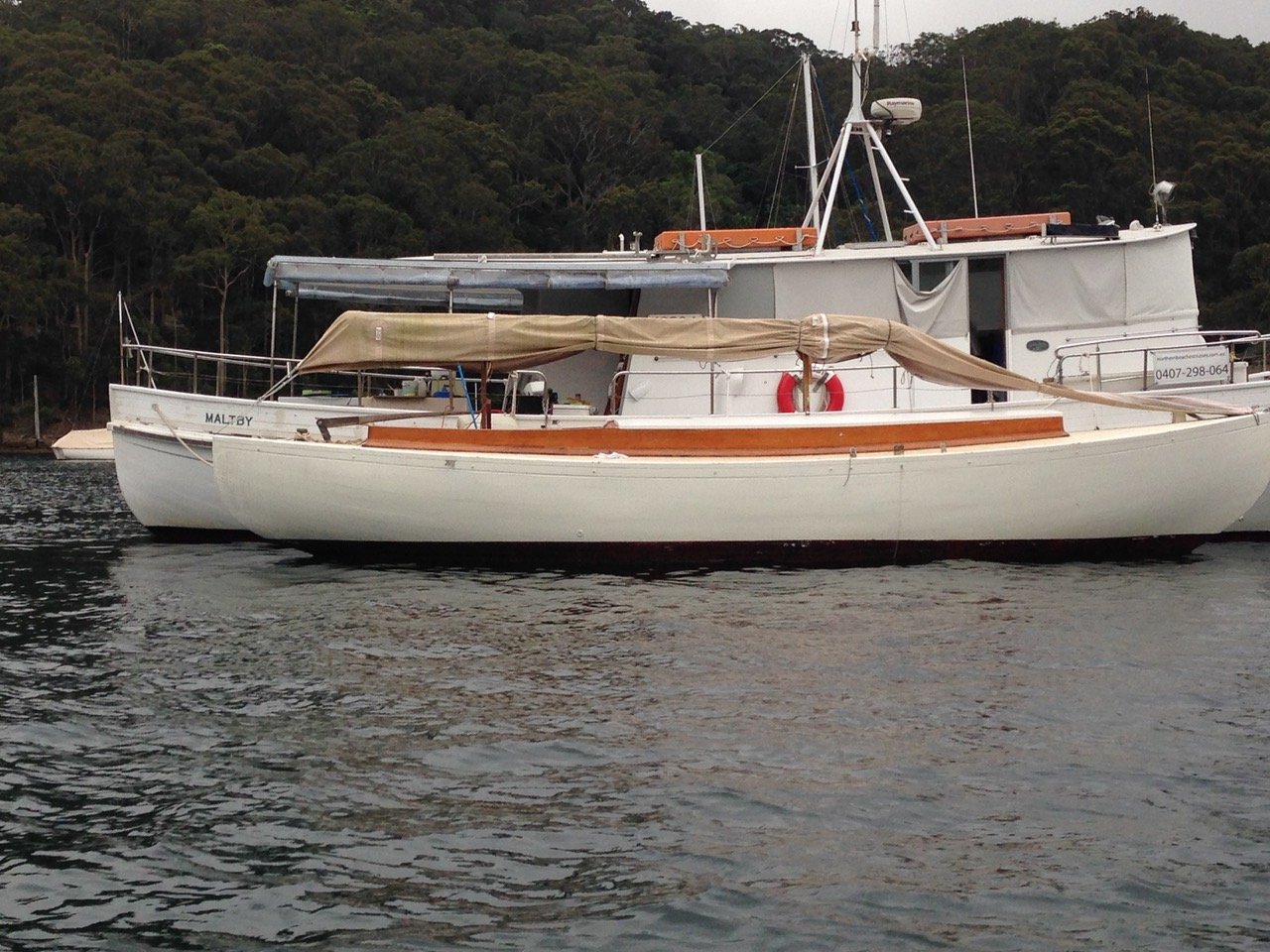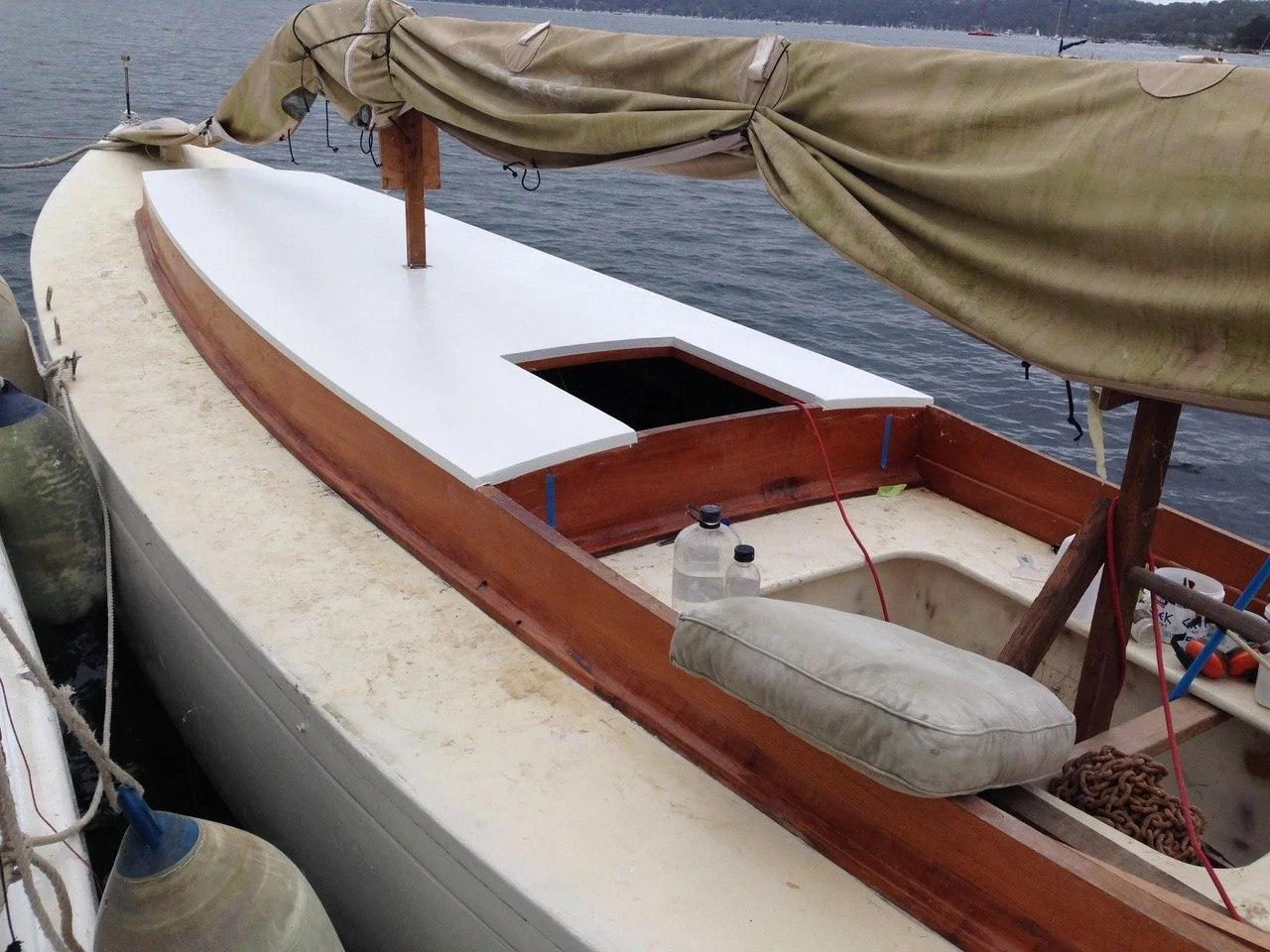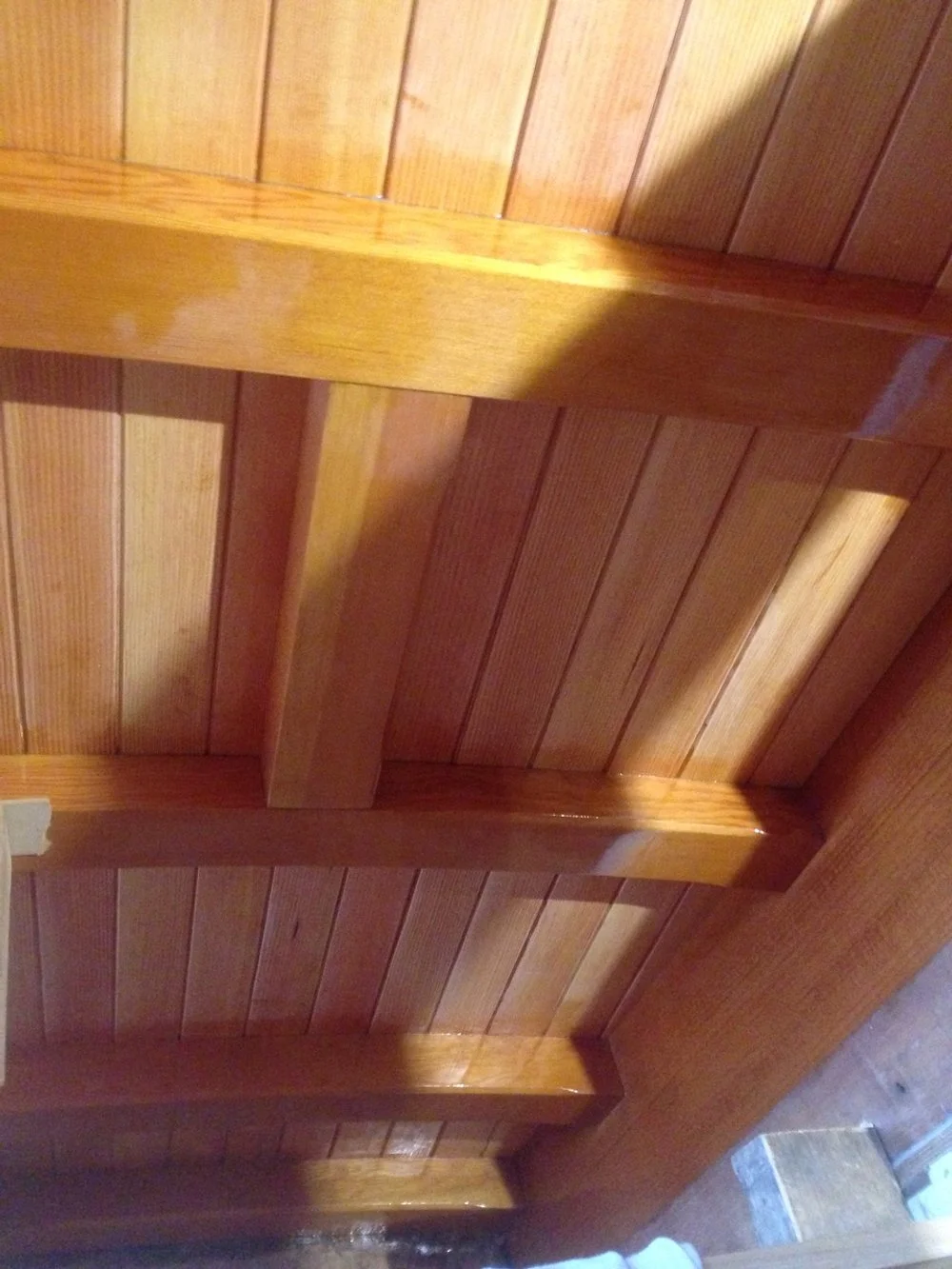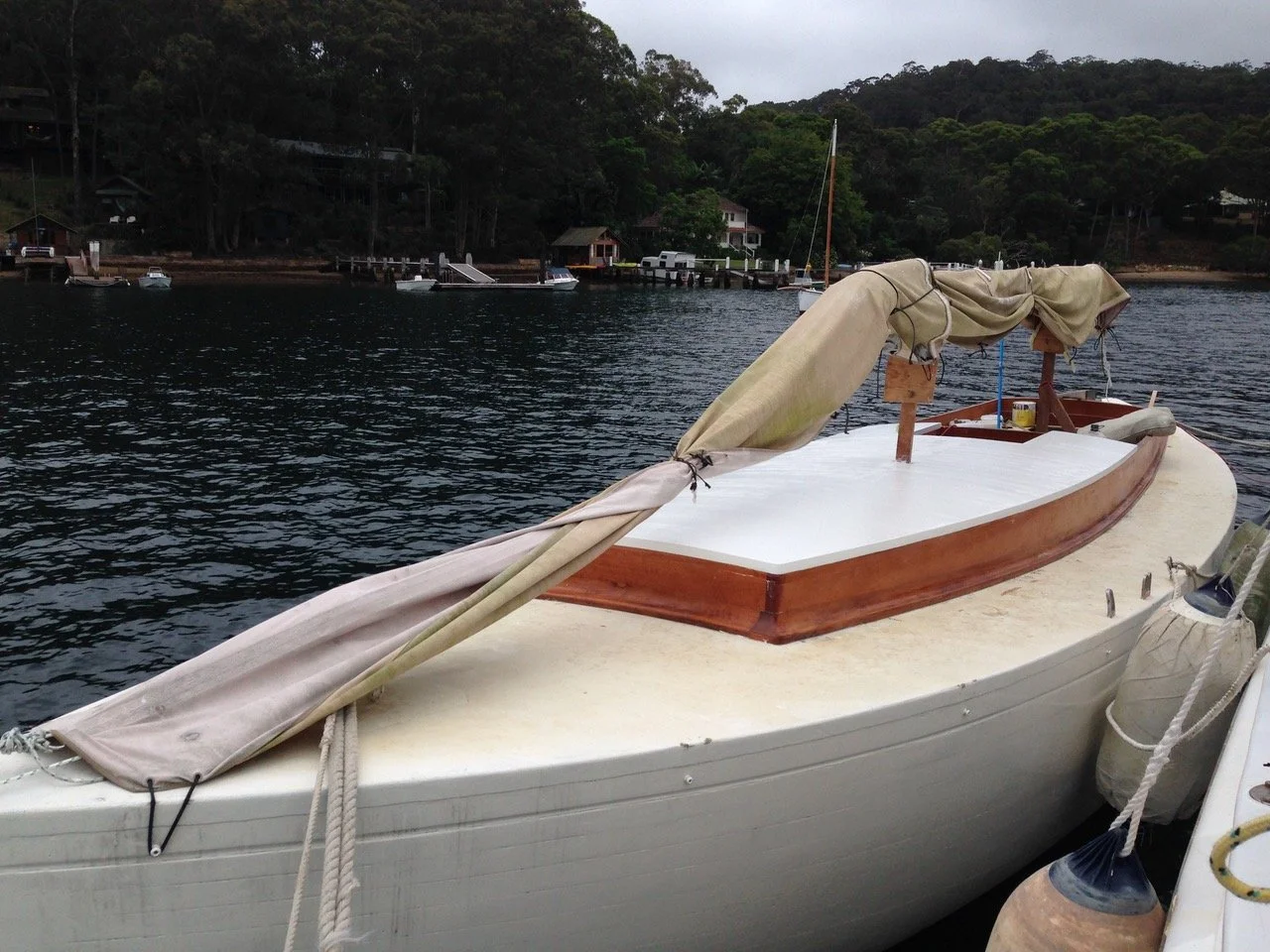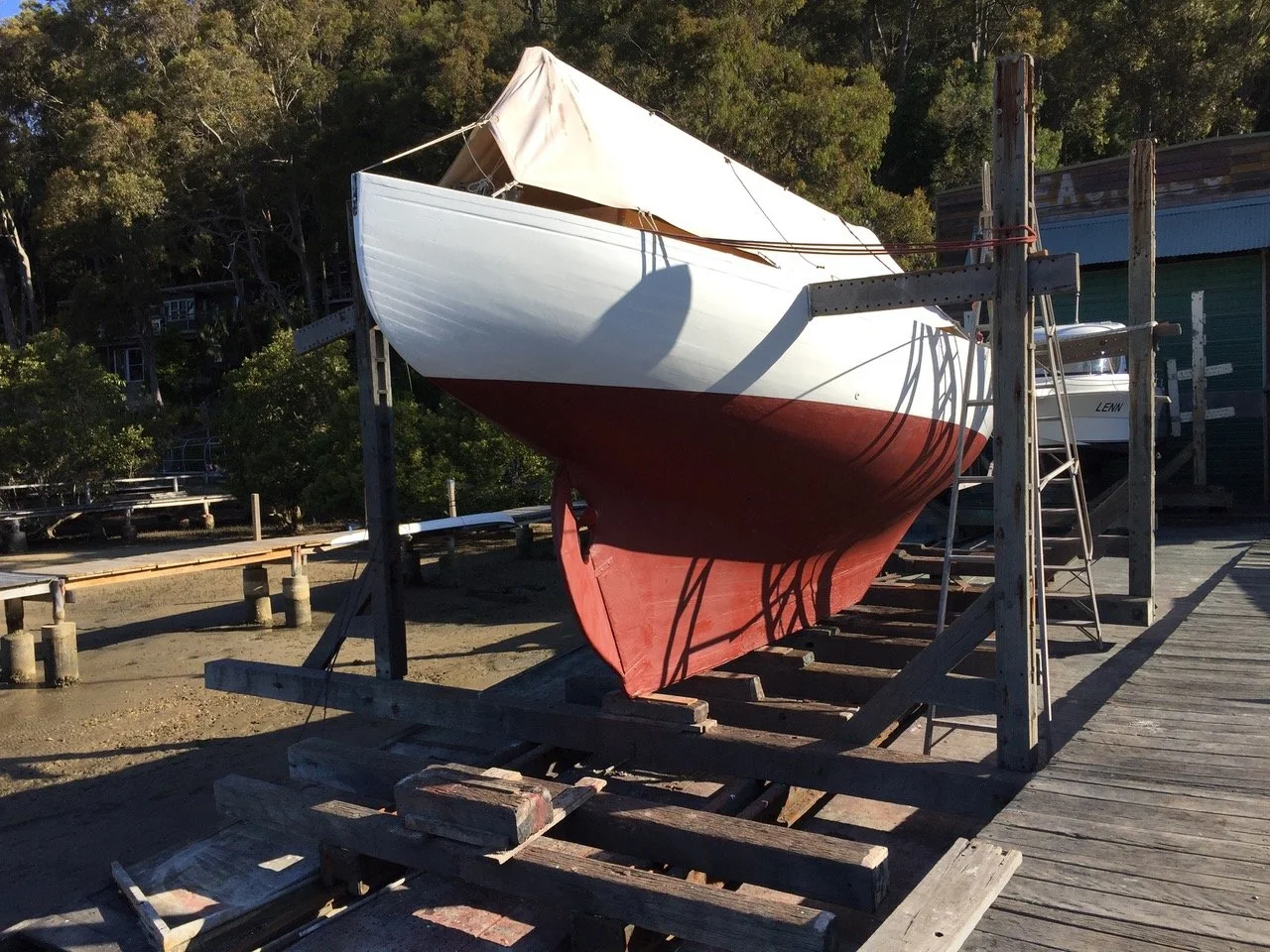Jolly Roger-Rani’s Relation
At the recent AWBF symposium, there was a forthright discussion as to what to do about the ever increasing shortage of quality boat building timbers. One of the more practical solutions offered was, that before embarking on the new build of a wooden boat, first consider if there is an existing craft that, given a full restoration, would fulfil your needs and dreams as well as one built from scratch. There are many benefits in this approach, a saving of timber being only a small one. You would get to preserve a lineage, sail with history aboard and learn lessons from the past.
With this at the back of my mind I received a call from Simon Sadubin of Sydney Wooden Boats this week telling me about an opportunity with a boat called JOLLY ROGER
Here’s some background
JOLLY ROGER was built in the 1940's by Sydney boat builder Charlie Larson to a design by A.C Barber.
Charlie Larson is best known for the yacht KATHLEEN GILLETT, which was sailed around the world from 1947 to 1948 by marine artist Jack Earl. Larson's shed was located at Wharf Road in Gladesville on the northern side of the Parramatta River, NSW. He built a number of craft including yachts, trawlers and small to medium sized military vessels for the services during World War II. The most well known vessels are some of his yachts.
Other boats built by Larson include JOLLY ROGER's sister ship RANI (A.C Barber design) who was the winner of the first Sydney to Hobart yacht race in 1945 as well as MOONBI who won the 1955 Sydney to Hobart yacht race.
It was noted after Larson's death in a 1956 issue of 'Seacraft magazine' that he was 'a shipwright of the old school, even perfection scarcely being good enough in the finished article.'
Barber is best known for his many yacht designs. The typical Barber design is thought of as a raised-deck and often canoe sterned sloop, but his designs were actually quite varied.
JOLLY ROGER completed the 1961 Sydney to Hobart yacht race with skipper A.J Sutton.
JOLLY ROGER starting the 1961 Sydney Hobart (and some Rum)
Well last year father and son team Johnny and Louis Mills, Pittwater based shipwrights, were well into a restoration of JOLLY ROGER when Jonny died suddenly.
Simon writes of him
“Johnny Mills was one of the most decent and respected people on the waterfront in Sydney. He helped people endlessly with their boats and was a fantastic shipwright. I cannot speak highly enough of him.”
What with the death of his father and the recent arrival of twins the project has become too much for Louis and he thinks its time to pass it on to the next custodian.
“So what state is the boat in?” I hear you ask…
JOLLY ROGER is built of New Zealand Kauri planking on steam bent harwood ribs. She is a 35ft sloop cutter with a beam of 9ft and a draught of 6ft. In the past 15 years JOLLY ROGER has undergone some major structural work. These include having had her decks and cabin top completely removed. All deck beams were inspected and replaced where necessary. Her original teak decks have been replaced with 12mm plywood and fibreglass sheathed. She has a new plywood and fibreglass sheathed cockpit. Her beautiful original teak grounds have been restored to original condition and reused. She has tough new full length teak cabin sides (7m long x 38mm thick). New Oregon cabin beams with Oregon V-groove lining boards. Over the lining boards there is 12mm plywood and then sheathed with fibreglass. Down below is mostly a blank canvas. She has a beautiful octagonal Oregon compression post just aft of the bulkhead. Forward of the bulkhead is the start of a reasonable sized head and the space for a decent sized V-berth. Most of the inside of the hull has reasonably fresh paint on it and the outside was painted in October 2020. Some caulking has been replaced as needed as well as some refastening. JOLLY ROGER sits safely under her one year old full length cover. There is a collection of bits and pieces to go with her that will include original port holes and sails from the 1980's. JOLLY ROGER needs some money spent on her to bring her up to scratch. She will need a rig, hatches, systems and a fit out. With all works done, the new owner will have a beautiful Classic timber yacht with a rich Australian history.
If you’re interested in taking on the custodianship of the special craft then contact Louis on +61 (0)416 885 572
(Click to Enlarge)
And here’s some background on the designer of the first Sydney Hobart winner thanks to the Australian Register of Historic Vessels.
AC Barber was born in Queenscliffe Victoria on 3rd February 1882. His father John Henry Barber (born in the UK) was a pilot, and his mother Janet Liddell came from New Zealand. Little is known of his early life, and the first reference is in 1906 when he was listed as a student member of the Institution of Naval Architects. By 1908 he was an Associate-Member. An entry in the Adelaide Advertiser from 30 April 1909 notes that Arthur Barber was part of group sent to Scotland to work on the construction of two torpedo boat destroyers, and he was reported to be a drafstman. This then helps confirm the understanding that he had gone to England where he received training in naval architecture. It is thought this happened at Durham University, where it is likely he studied part time in the evening, apparently a common practice but it meant the students did not matriculate with a formal qualification.
When he returned to Australia he began designing boats in Melbourne before moving to Sydney in 1915 where he worked as a designer with Kidman Boats. In the early 1920s he had set up his own practice with offices in Pitt St Sydney. His plans were well drafted to the standards of the period, and included designs for dinghies, yachts, launches, ferries and possibly ships. Throughout his professional life he seems to have been known as AC Barber. The initials stand for Arthur Carlyle, but contemporary associates seem to have known him as Archie or Archibald and even Ali Barber.
Barber is best known for his many yacht designs. The typical Barber design is thought of as a raised-deck and often canoe sterned sloop, but his designs were actually quite varied. The Prince Class from 1925 and yachts such as STORMBIRD and AEOLUS seem to fit the typical pattern, but the metre boat style MISTRAL IV and COLEEN, which became the Derwent Class, show another side to his talents. LAURIANA, a 19 metre canoe-sterned motor sailer well known in Sydney is another design which shows the variety of types he produced. In the early 1920s he redrafted James Alderton's plans for the Australian 12 Foot Cadet Class so that a fully detailed set was available for amateur construction. In 1937 he designed a 6 metre for himself, but sold it to help pay off a debt.
Barber designed launches include the first MIRIMAR a luxury cruiser from 1925 for Stuart Doyle. When Doyle commissioned the 23 metre long MIRIMAR II from a US designer a few years later, Barber was also employed as the local design representative on the project.
RANI, the winner of the first Sydney to Hobart yacht race in 1945 is his most well-known design, and its simple looks and rugged construction are features common to Barber vessels. Barber also designed RIPPLE which won the Hobart race later in the 1950s.
He also designed a number of ferries, WANGI WANGI, built by W. Holmes Boat Builder in 1924 was used on the Central Coast.
He and his wife were owners of Heggarty Ferries during the 1950s and early 1960s. This small inner harbour service had a monopoly on the Luna Park amusement park service to North Sydney and was a popular company amongst the locals. It is believed Barber retired to the Blue Mountains after selling Heggarty Ferries. He and his wife settled in Hazelbrook and AC Barber died there on 13th November 1962.

